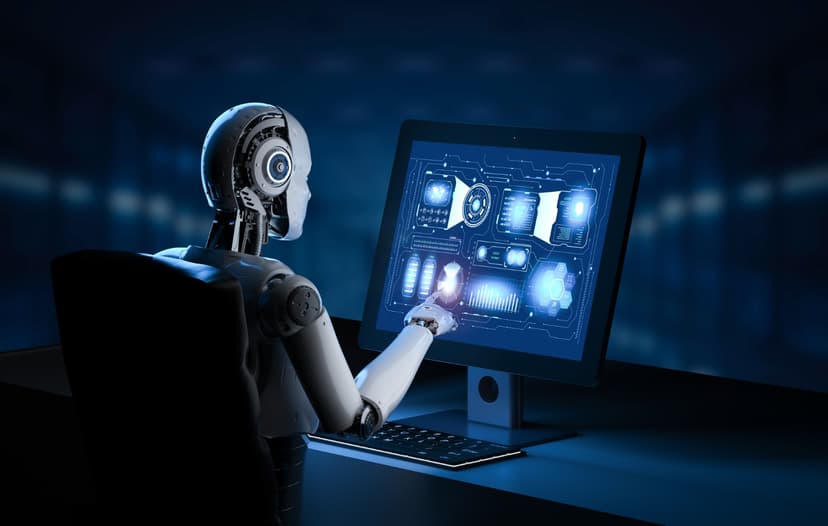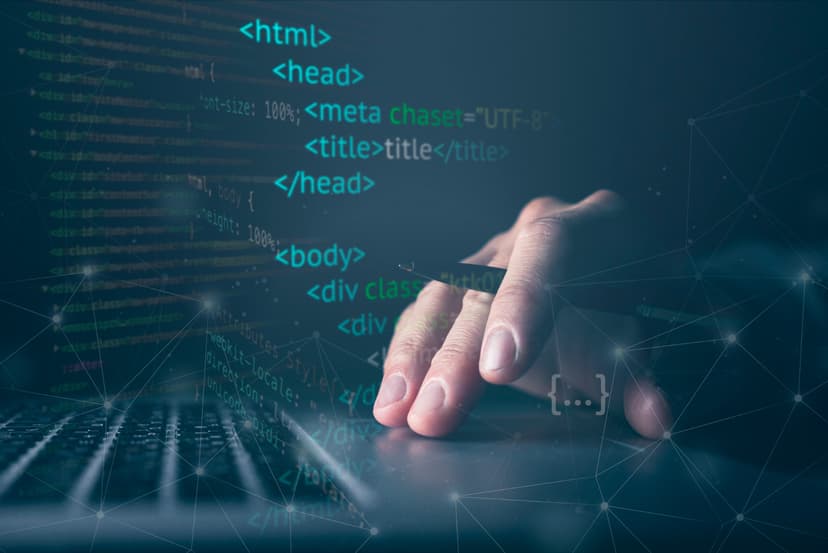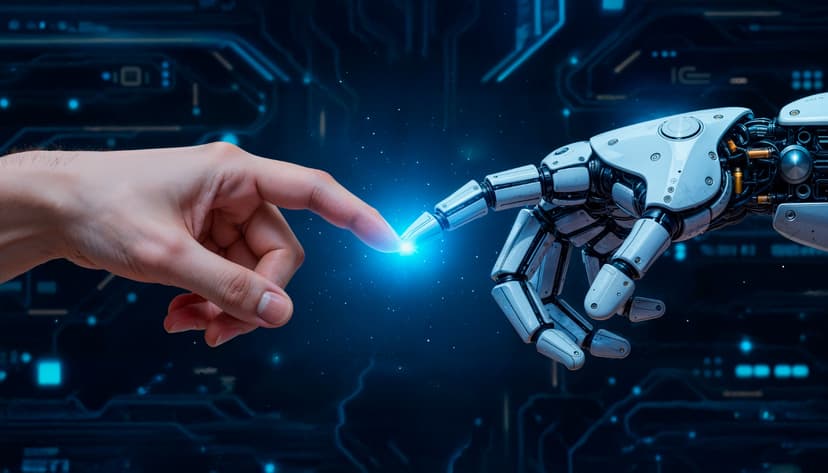


The Kingdom of Saudi Arabia is witnessing a radical transformation across various economic and social sectors, and the Vision 2030 program is the primary driver of this change. One of the most prominent sectors impacted by this transformation is marketing, as marketing strategies in the Saudi market have evolved to keep pace with this transformation and achieve the ambitious vision's aspirations.
In this article, we review how Vision 2030 has impacted marketing plans and strategies, and the new trends that have emerged in the Saudi business environment.
1. Digital Transformation and Modernization of Marketing Channels
Digital transformation is one of the most important pillars of Vision 2030, and this has directly impacted marketing methods in the Kingdom.
Traditional channels are no longer sufficient; digital marketing, via the internet and social media, has become the most prominent option.
Direct Impacts:
Expansion in the use of paid digital advertising.
Increasing reliance on platforms such as Snapchat, Twitter, and Instagram in advertising campaigns.
The proliferation of marketing tools and data analysis.
2. Women's Empowerment and the New Target Market
With the support of women's participation in the labor market and increased economic empowerment, a new consumer segment has emerged that companies must target.
Results of this trend:
Designing marketing campaigns that cater to the new interests of Saudi women.
Diversifying marketing messages to attract a larger segment of customers.
3. Supporting Small and Medium Enterprises
Vision 2030 encourages private sector development and supports entrepreneurship, creating a new competitive environment for startups.
New marketing strategies have emerged:
Using content marketing to promote small brands.
Adopting local influencer marketing to support startup products.
Low-cost and flexible digital campaigns.
4. Marketing the Tourism and Entertainment Sector
With the opening up of the tourism sector and increased investment in entertainment, the Kingdom has become a new global destination. This has led to the emergence of local and global marketing strategies to promote Saudi tourist attractions.
Real-world examples:
Promotional campaigns for AlUla, NEOM, and the Red Sea.
Using virtual reality technologies to promote tourist destinations.
Collaboration between government and private entities in marketing campaigns.
5. Building the Saudi Identity
Vision 2030 aims to strengthen national identity and raise the quality of local products. This requires companies to develop their marketing identities in line with these principles.
Emerging Trends:
Focusing on the "Made in Saudi Arabia" slogan in campaigns.
Adopting purposeful marketing that reflects Saudi values.
Investing in high-quality marketing design and language.
Conclusion: Marketing in Saudi Arabia... A Dynamic Future
Vision 2030 has brought about a qualitative shift in various aspects of life in the Kingdom, and the marketing sector has had a significant share of this change.
Marketing strategies have become more flexible, digital, and comprehensive, responding to the needs of a changing society and a growing market.
Adapting to this vision is no longer an option; it has become a necessity for any company seeking success and sustainability in the modern Saudi market.

The digital future is in our hands: Software is one of the fundamental pillars upon which the digital world relies across various industries and sectors. With the continuous advancement of artificial intelligence technologies, a new concept in software development has begun to take shape, where AI has become a key tool that contributes to improving and simplifying the software development process. Integrating AI into software development represents a qualitative shift towards a more efficient and innovative future, contributing to accelerating productivity, improving performance, and providing smart solutions that keep pace with modern requirements.
What is AI in Software Development?
AI in software development refers to the use of AI technologies to help build and design software more effectively and efficiently. AI can accelerate many aspects of the software lifecycle, from planning and design to testing and maintenance. Technologies used in this field include machine learning, big data analytics, pattern recognition techniques, and intelligent systems.
How is AI used in software development?
Intelligent planning and design: Using AI technologies, developers can analyze large and diverse data sets related to market requirements and needs. AI also helps design systems and applications based on accurate analyses of predicted trends and patterns. Furthermore, AI tools can create design prototypes or suggest engineering solutions that may be more efficient.
Automated Code Development: AI helps speed up code writing through tools such as intelligent programming assistants (such as GitHub Copilot), which provide code suggestions as developers write. AI analyzes the code written by programmers and helps improve it by predicting the next code based on current data. This increases developer productivity and helps reduce bugs.
Intelligent Software Testing: Software testing is one of the most important phases of software development, helping ensure the quality and efficiency of the software. AI can contribute to improving software testing by automatically analyzing code to detect errors and inconsistencies. AI can also generate preliminary test scenarios based on real-world usage patterns and user behavior, reducing the time and costs associated with this process. Predictive Maintenance: After software is released, users may encounter bugs or technical issues that need to be fixed. AI can use data and predictive analytics to detect problems before they become serious for end users. AI continuously monitors software and predicts potential failures, helping to proactively improve maintenance. Intelligent Project Management: AI technologies help software development teams organize work and analyze time and resource estimates more accurately. By monitoring progress and analyzing historical data, AI can provide accurate reports on project schedules and potential risks, facilitating faster and more accurate decision-making.
Benefits of Using AI in Software Development
Increased Efficiency and Speed: AI helps speed up the software development cycle by automating repetitive tasks such as programming and testing, reducing time and effort.
Improved Quality: AI can detect errors and problems faster than traditional methods, improving software quality and reducing error rates.
Fostering Innovation: AI provides the tools that enable developers to think in new and unconventional ways, opening up new avenues for innovation in software design.
Reduced Costs: By improving productivity and reducing errors, the costs associated with software development and maintenance can be reduced.
Analysis and Forecasting: AI contributes to analyzing big data related to software projects, predicting market trends and user needs, helping develop solutions that meet customer expectations.
Challenges Associated with Using AI in Software Development
Complexity of Team Coordination: Using AI requires careful coordination between development and AI teams to ensure effective integration.
Data Dependence: AI technologies rely heavily on good, accurate data. Therefore, any incomplete or distorted data can negatively impact system performance.
Automation Concerns: Some developers and teams may feel they will be replaced by intelligent tools, raising concerns about the impact of automation on the job market.
The use of AI in software development represents a revolutionary step toward improving processes and increasing efficiency in the software industry. By automating repetitive tasks, accelerating testing, and improving designs, AI can revolutionize the way software is built. As AI technologies continue to evolve, these tools are expected to become more intelligent, enabling developers and companies to produce more innovative and efficient software solutions.

In the modern digital age, programming has become more than just a technical skill; it has become a key driver of business development and success. Whether you're a startup or a large corporation, adopting smart software solutions has become essential to maintaining competitiveness and achieving sustainable growth.
In this article, we explore the importance of programming in business development and how it contributes to improving performance and increasing profits, focusing on its role in digital transformation and corporate innovation.
1. What is programming and why is it essential in the business world?
Programming is the process of writing instructions and commands that a computer understands to run programs and applications. In the business environment, programming is used to develop websites, mobile applications, resource management systems, and data analytics.
2. Process Automation and Cost Savings
One of the most important benefits of programming is that it enables companies to automate their business processes, such as inventory management, invoicing, and customer service.
This reduces reliance on manual labor and human error, which positively impacts performance and costs.
✔ Application Example:
A shipping company developed a software system to automatically manage orders, saving over 30% of its operating expenses in one year.
3. Improving Customer Experience and Expanding Markets
Thanks to coding, companies can create interactive applications and websites that enhance user experience and attract new customers from around the world.
✅ Improvements Provided by Programming:
Multilingual Support
AI Automated Responders
Secure Electronic Payment Systems
4. Data Analysis and Smart Decision Making
Programming provides powerful tools for data analysis, helping companies understand customer behavior, predict trends, and make evidence-based decisions.
📊 Examples of Technologies Used:
Python for Data Analysis
SQL for Database Management
Power BI and Tableau for Data Visualization
5. Supporting Sustainable Innovation
Programming is the foundation of innovation, whether in developing new products or improving existing processes. Companies that integrate programming into their strategies are better able to keep pace with change and meet future challenges. Conclusion: The future of business begins with programming.
In a rapidly changing world, programming is the cornerstone of any company seeking to expand, excel, and lead.
If you're wondering how programming will change the future of business, the answer is clear: programming is the key to digital transformation and long-term success.

The world today is undergoing an unprecedented transformation thanks to advances in artificial intelligence and machine learning.
From improving everyday services to driving massive innovations in various sectors, such as healthcare, education, and industry, artificial intelligence has become an essential tool for reshaping the way we interact with the world around us.
What is Artificial Intelligence?
AI is a branch of computer science that aims to create systems capable of mimicking human intelligence, such as reasoning, analysis, learning, and decision-making.
Its applications span a wide range of fields, from smart assistants like Siri and Alexa to the recommendation systems of Netflix and Amazon.
The most important characteristics of AI are:
The ability to learn from experience and data.
Logical analysis and data-driven decision-making.
Self-development without the need for constant human intervention.
What is Machine Learning?
Machine learning is a branch of artificial intelligence that focuses on developing systems capable of learning from data without the need for explicit programming for each task.
In other words, the system analyzes massive amounts of data, then discovers patterns and relationships that enable it to perform specific tasks better over time.
Types of Machine Learning:
Supervised Learning:
The model is trained on input data with correct answers.
Unsupervised Learning:
The model attempts to discover patterns and relationships in the data without guidance.
Reinforcement Learning:
The system learns through trial and error to achieve optimal results.
The Relationship Between Artificial Intelligence and Machine Learning
Machine learning is an important approach to artificial intelligence.
AI encompasses a wide range of goals and techniques, while machine learning is the tool that helps machines develop their own intelligence based on data.
Simply put: all forms of machine learning are part of artificial intelligence, but not all artificial intelligence is based solely on machine learning.
Applications of Artificial Intelligence and Machine Learning
These amazing technologies have numerous applications, including:
Healthcare: Early diagnosis of diseases through medical image analysis.
E-commerce: Improving user experience through intelligent recommendations. Financial sector: Fraud detection and credit risk analysis. Industrial sector: Predictive maintenance of production lines using performance data.
Future challenges.
Despite the tremendous opportunities available, AI and machine learning technologies face numerous challenges, most notably:
Privacy and data security issues.
Bias in algorithms and automated decisions.
Impact on the labor market and the replacement of some traditional jobs.
Therefore, this technological revolution requires the development of regulatory and ethical frameworks to ensure their responsible and sustainable use.
AI and machine learning are not just future technologies; they are a reality we live in today.
The more these fields advance, the more opportunities they offer to improve our daily lives, and the more important it is to use these technologies consciously and responsibly to achieve a better future for all.
AI is beginning to reshape our world, and the question now is: How do we prepare to seize this tremendous opportunity?

In recent years, Saudi Arabia has witnessed a significant shift in consumer behavior and purchasing practices. Much of this transformation is due to the rise of e-commerce platforms such as Noon and Souq (now part of Amazon).
These platforms have not only changed the way individuals shop, but have also imposed a new reality on businesses and organizations, leading to the decline of traditional marketing and the emergence of more effective and impactful digital marketing strategies.
1. What distinguishes Noon and Souq?
• Ease of access and speed of service
• These platforms provide a quick and easy shopping experience via mobile apps and websites, attracting a large segment of customers who prefer online shopping to visiting traditional stores.
• Product diversity and offerings
• By offering millions of products and a variety of price and brand options, these platforms have become a comprehensive marketplace for Saudi consumers.
• Rating and reliability systems
• These platforms' reliance on customer reviews and product ratings has given consumers confidence, something that is equally difficult to achieve in traditional marketing.
• 2. The Impact of These Platforms on Traditional Marketing
📉 Decline in Traditional Advertising
Many brands have begun reducing their spending on billboards, newspaper ads, and television ads, and have begun shifting to digital campaigns through platforms such as Noon and Amazon.
💡 Changing Marketing Strategies
With the availability of intelligent analytics tools on these platforms, it has become possible to precisely target ads to a targeted audience, increasing marketing effectiveness compared to traditional mass advertising.
🛍 Merchants are moving toward online sales.
Even small stores have begun creating digital stores on Noon and Amazon to increase their reach, reducing their reliance on traditional stores.
3. Cross-Platform Marketing... A New Model
Noon and Souq now offer paid inbound marketing services, allowing sellers to:
Promote their products in search results.
Offer special discounts for seasonal events.
Analyze sales data to develop strategies.
This type of marketing relies on live data and analytics and is more effective than traditional methods that do not provide direct feedback or accurate results.
4. Challenges and Opportunities for Traditional Marketers
While traditional marketers face challenges in attracting digital consumers, there is still an opportunity to adapt by:
Moving to digital marketing and integrating with e-commerce platforms.
Leveraging visual and concise content to attract a new generation of audiences.
Focusing on building a strong digital brand rather than relying solely on physical presence.
Conclusion: Traditional Marketing vs. Digital Transformation
With the rise of platforms like Noon and Souq, it has become imperative for businesses and marketers to rethink their strategies.
Traditional marketing is no longer sufficient to reach a wide audience or achieve rapid growth rates. Digital marketing within e-commerce platforms is the true future.
Success in today's Saudi market requires understanding this transformation and adopting its tools intelligently and flexibly.

In recent years, the gaming industry has seen a tremendous leap in popularity, innovation, and profits. With the growing global demand for video games, game development has become one of the most sought-after specialties in the world of programming.
But what is the relationship between programming and game development? And how does programming contribute to building amazing games that attract millions of players around the world? This is what we will explore in this article.
1. What is Game Development?
Game development is the process of designing, programming, and testing video games. This process involves several stages, beginning with the idea, then graphic design and programming, and ending with the game's launch.
2. The Role of Programming in the Gaming Industry
Programming is the backbone of any video game. Programmers write the code that controls character movement, game rules, player interaction, and artificial intelligence.
✅ Examples of in-game programming functions:
Controlling game physics (such as gravity or collisions)
Programming artificial intelligence for enemies
Creating user interfaces (UI)
Seamlessly integrating sound and motion
3. Game Engines: Integrated Programming Tools
Game engines are integrated development environments used to build games faster and easier. These engines provide ready-made tools for graphics, physics, programming, and audio.
🎮 The most popular game engines:
Unity: Built on C#, it's widely used for developing mobile and virtual reality games.
Unreal Engine: Powerful in graphics, used in large AAA games, and built on C++ and Blueprint.
4. Why is game development such a promising future?
💰 Huge financial returns: The gaming industry exceeds $200 billion annually.
🌍 Global audience: Video games attract players of all ages and cultures.
💡 Creativity and technology: It combines art, programming, and innovation.
📈 Various job opportunities: game developer, graphic designer, quality tester, interactive script writer, and more.
5. How to get started in game programming?
If you're interested in combining your passion for gaming with programming, start with these steps:
Learn a programming language like C# or C++
Download a game engine like Unity or Unreal
Start with small projects (such as a simple game)
Take courses or enroll in platforms like Coursera or Udemy
Join game developer communities and participate in gaming events
The bottom line: Programming creates imaginary worlds
Ultimately, game development isn't just a hobby; it's a full-fledged field that combines technology and creativity. Using programming, developers can build imaginative worlds, transform ideas into dynamic interactions, and influence millions of players.
If you're looking for a vibrant and innovative programming field, game programming is the future you should start with today.